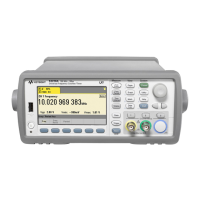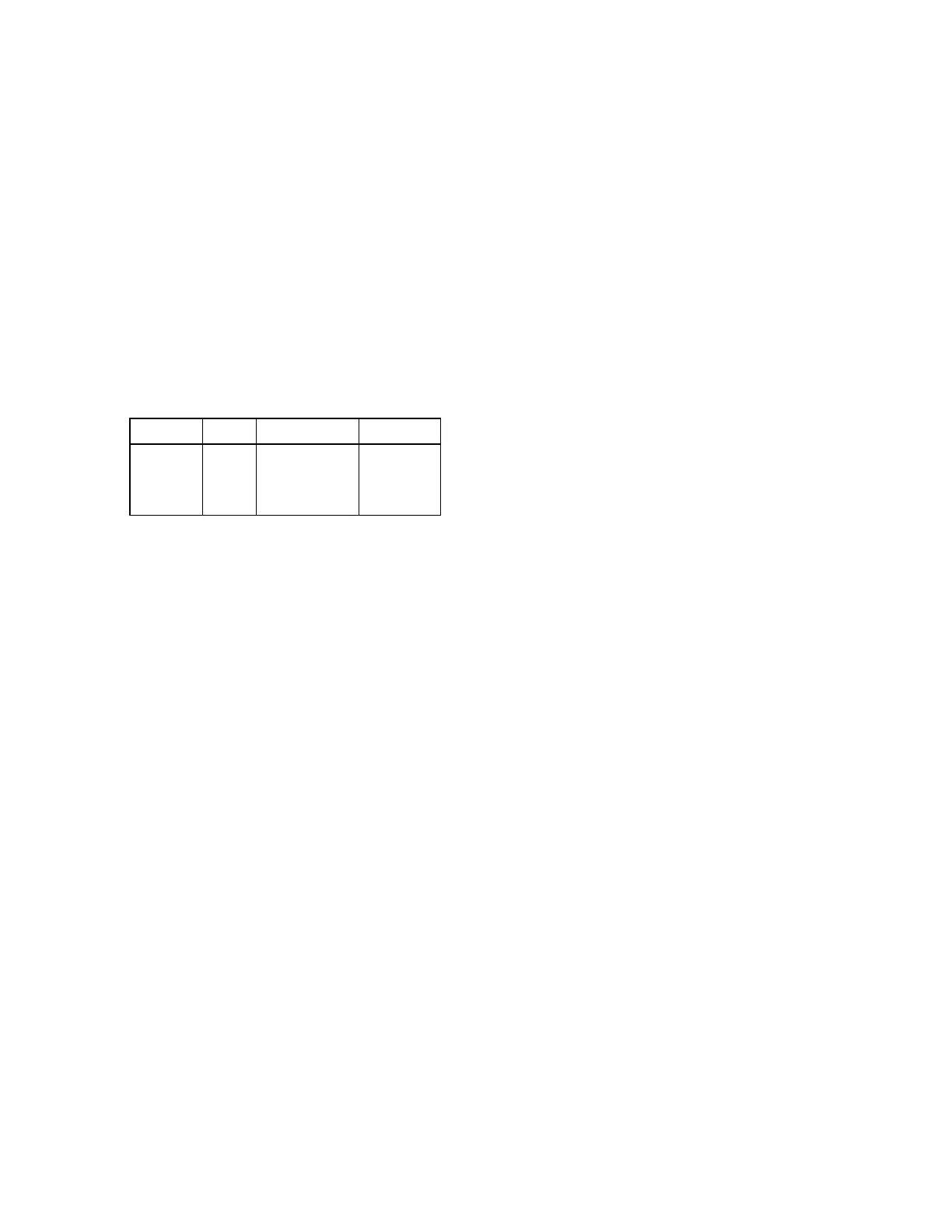SAMPle:COUNt
Syntax
SAMPle:COUNt {<count> | MINimum | MAXimum | DEFault}
SAMPle:COUNt? [{MINimum | MAXimum | DEFault}]
Description
This command selects the number of measurements (samples) the instrument will take per trigger.
Parameters
Name Type Range of Values Default Value
<count> Numeric 1 to 1,000,000
MIN = 1
MAX = 1,000,000
1
Remarks
l You can use the specified sample count in conjunction with a trigger count (see TRIGger:COUNt com-
mand) which sets the number of triggers to be accepted before returning to the "idle" trigger state. In
this case, the total number of measurements returned will be the product of the sample count and trig-
ger count.
Number of measurements = Sample Count x Trigger Count
If more than 1,000,000 measurements are to be taken, the data must be read from reading memory
fast enough to avoid a memory overflow. If memory overflows, the new measurements will over-
write the first (oldest) measurements stored; the most recent measurements are always preserved.
No error is generated, but the Reading Mem Ovfl bit (bit 14) is set in the Questionable Data Register.
l The CONFigure and MEASure? commands automatically set the sample count to "1", except for the
CONFigure:ARRay:TSTamp and MEASure:ARRay:TSTamp? commands, which set the sample count to
the value of the <count> parameter for these commands.
l The sample count setting is ignored when making continuous totalize measurements. Only one meas-
urement will be made for each READ? or INITiate[:IMMediate] command.
l The instrument sets the sample count to 1 after a Factory Reset ( *RST command) or a Preset
(SYSTem:PRESet command).
Return Format
The query returns the sample count in the form +1.
Keysight 53220A/53230A Programmer's Reference 317
SAMPle:COUNt

